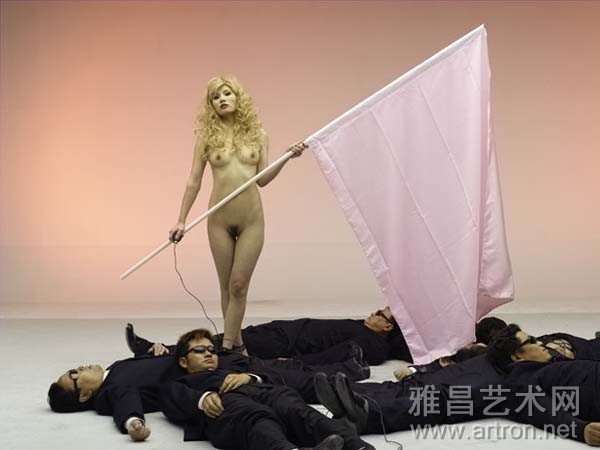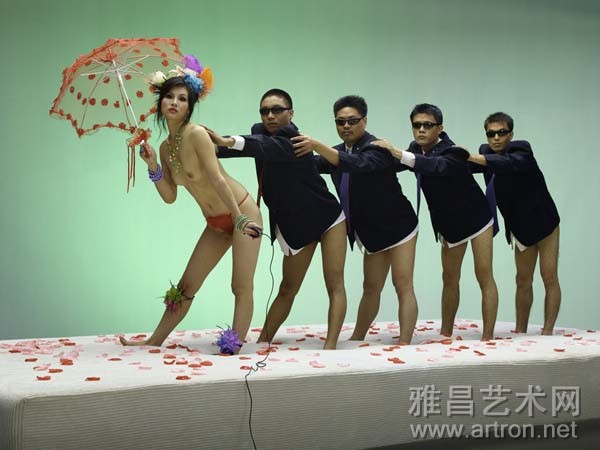
from 99ys May 16, 2011 report
Speaking of firsts.
As reported by 99 Yishu, one can now buy stock in a series of 23 paintings by Zhong Biao. One buys such stock, moreover, not in the entire series, or even an entire canvas, but instead in one square foot of canvas. The total package, comprised of paintings executed between 2007 and 2010, amounts to 3000 square feet.
The goal of such an operation is to give the up-and-coming class of Chinese investors in art an opportunity to partake in the contemporary Chinese art market even though most of them do not have the type of funds elite (and by-and-large non-Chinese) art collectors have.
Zhong Biao is the first contemporary artist to be listed in this way. The reason Zhong Biao was selected, according to Su Yang, spokesperson for the group, has to do with his ability to combine international vision that spans East and West a traditional sensibility expressed in an entirely contemporary idiom.
There is no official word on current value, but “knowledgeable sources” estimate roughly 50,000,000 RMB. This, at the current moment, amounts to 7 million 726 thousand 898 dollars and 38 cents. Give or take.
继前不久成都文交所推出的总价值达5000万元的首个艺术品资产权益份额产品《汪国新·朋友》后,昨日,成都文交所和成都733文化艺术发展有限公司又联手推出了“艺术财富I号-钟飙当代艺术”资产权益份额产品资产包,准备把四川当代艺术家钟飙的23幅油画组包发行,这将是国内第一起把当代艺术家的作品“打包上市”的案例。
钟飙组包的23幅油画作品的画面尺幅共计3000平方尺左右,为钟飙2007年-2010年的代表作。
成都本土当代艺术家中有不少人名气更大,为何国内首个当代艺术品份额交易落在了钟飙的头上?733负责人苏阳向华西都市报记者解释,钟飙的作品中西合璧,有传统文化的血缘,同时也具备国际视野,他的作品市场价格目前在不断攀升,可以给投资人最大的收益。据了解,钟飙作品资产包将于近日在成都文交所挂牌上市,虽然目前还未公布整个资产包的总价值,但知情人表示,不会低于汪国新的5000万元。



